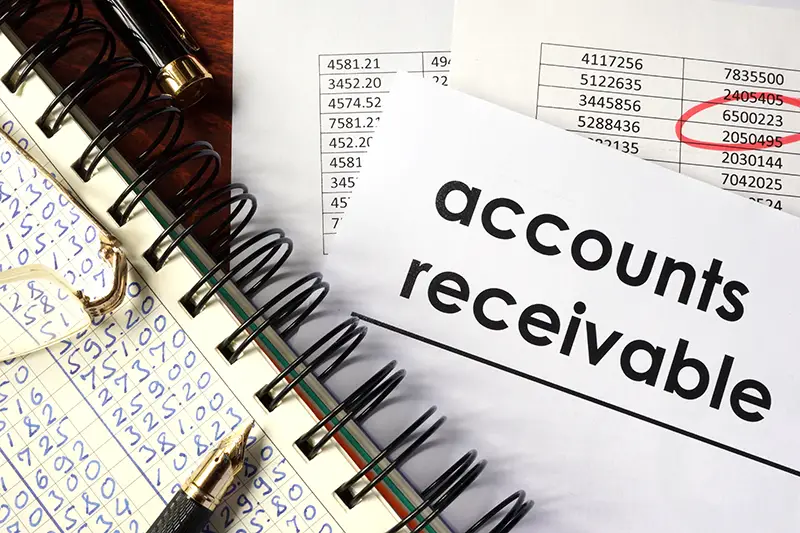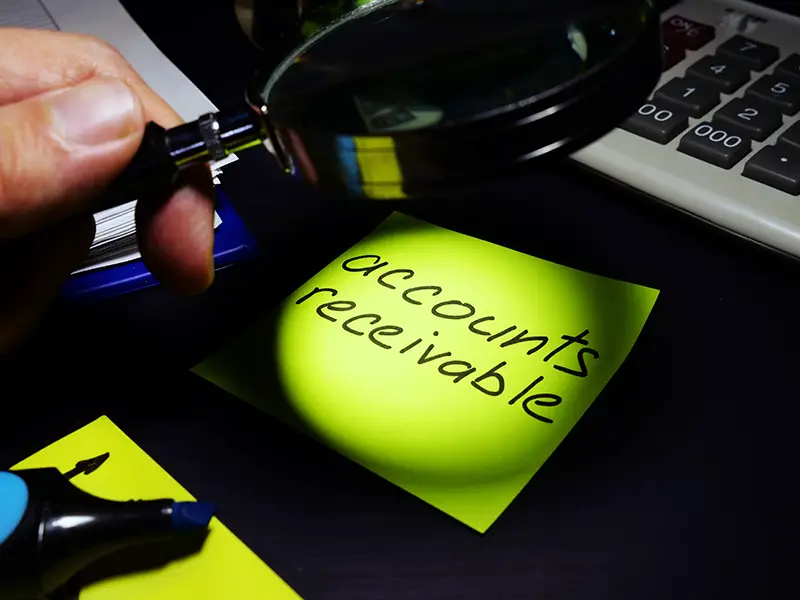Click here to get this post in PDF

Most business owners do business with their customers on credit. This means that they deliver the products and services after orders have been placed, send an invoice, and the customers will pay them a few weeks later. This is where an account receivable enters the picture.
So, if you’re running a business that offers credit, keep reading this article to learn more about accounts receivable and how it can work.
What Is Accounts Receivable?
In simple terms, accounts receivable refers to an account outlining the amount of money a business has to collect from the customers in exchange for goods and services already delivered. This money is usually collected after a few weeks or a specific period of time, and is then recorded as a collectible asset on your company’s balance sheet. Generally, this amount of time, which is called a term, may be 30, 60, or 90 days, depending on the agreement.
While it’s easy to define accounts receivable as the balance due for the delivered goods and services but not paid yet, the following are the terms that you may want to get familiar with when dealing with accounts receivables:
- Accounts receivables turnover ratio – This refers to a measurement indicating how your company can efficiently collect receivables from your customers.
- Average collection period – This refers to the amount of time it takes your business to be able to collect payment from your customers.
- Current liabilities – This refers to your company’s debts and obligations, which are owed to the creditors.
As you can see, accounts receivables are an essential account for most business owners. It’s something that you should never take lightly due to some important reasons. For instance, the longer you’re unable to collect your company’s money, the longer time you need before you can invest in production for the next order. This means that the more uncollected payment your business has, the more you tie up the working capital, which eventually results in longer business cycles.
In such a case, it’s imperative that you collect all due accounts as soon as possible. This can be one of the best cash flow practices you should follow for the benefit of your company. However, in case you’re having a hard time collecting all the amounts due and keeping your cash flow afloat, you may want to consider the whole process of debtor finance to help you turn unpaid sales invoices into cash, and ensure a financially stable company over time.
How Can Accounts Receivables Work?

Now that you know what accounts receivables mean, the next thing to do is familiarize yourself with how this type of account can work perfectly for your business. To better understand how accounts receivables work, the following are the things you need to know from the get-go:
1. Creating An Invoice For The Goods Delivered And Services Performed
The first step to accounts receivables accounting is to make an invoice for all the goods and services delivered to the customers. At this point, you should make sure that the invoice has the necessary information. These can include:
- Date of transaction
- Complete customer information
- Goods delivered or services rendered
- Total amount due
- Payment due date
- Payment terms
- Company’s contact information
- Relevant purchase order information
2. Record The Necessary Information Within Your Accounting System
Once you’ve made and sent your invoices to your customers, the next step is to debit and credit the appropriate accounts within your accounts receivables accounting system. These can include the debit accounts receivable for the amount due from your customers and the credit sales for the same amount.
3. Collect Payment From Your Customers
After the recording process, it’s then time to collect payment from your customers. Depending on the payment term your business and customers have agreed upon, the collection may be due for 30, 60, or 90 days. But, whatever it is, you can collect the payment due via cash, check, or electronic means. In case you’re having difficulty collecting from the customers, you may want to consider some tips that can help improve accounts receivables collections.
4. Record The Proper Accounts To Show Payment
After collecting the amount due from your customers, you should proceed with the debiting and crediting of proper accounts within your accounting system to reflect payment. These can include the credit accounts receivables that’ll reduce amount owed by your customers, and the debit cash that’ll show an increase due to the payment recorded.
Receivable Factoring: Role and Features of Factoring
Bottom Line
With the information mentioned above, it’s clear how important account receivables are to the growth and success of your business. However, if you want to reap the benefits of this type of account, you should know how to manage them more efficiently. That way, you’ll be able to see your accounts receivables as an asset rather than a liability.
Image Source: AdobeStock
